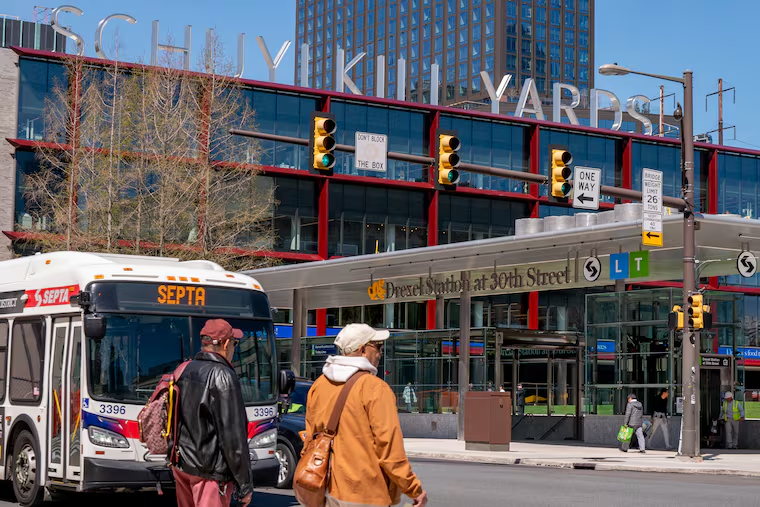SEPTA’s Drexel Station reopens with major upgrades, including efforts to connect it to Amtrak’s 30th Street Station
SEPTA CEO Leslie S. Richards wants all stations to one day look like this one.

SEPTA’s 30th Street Station officially opened Monday with upgrades and a new name: Drexel Station at 30th Street. The renovations include efforts to connect to Amtrak’s 30th Street Station, something transit riders have wanted for decades.
The station, which connects riders to the Market-Frankford Line, five trolley lines, and several bus routes, has been undergoing renovations for several years. Drexel University also partnered with SEPTA late last year to acquire exclusive naming rights to the station for five years under a $3.1 million agreement.
“A refurbished, more accessible and more navigable Drexel Station at 30th Street is a huge quality-of-life win for everyone,” said John Fry, Drexel University president. “We will have more pedestrian traffic on the sidewalks, which translates into a more vibrant street life. That promotes economic activity and, of course, enhances public safety.”
Renovations include a new glass headhouse, upgraded stairs, escalators and elevators, as well as an expanded mezzanine, new tiles, and brighter lighting.
The station is also SEPTA’s first to feature updated signage from the agency’s new way-finding system, which aims to make the transit system easier to navigate.
Elevator infrastructure in the station was extended to a lower level in the hopes that it will allow travelers to access Amtrak’s William H. Gray III 30th Street Station in the future. The two stations were formerly connected by a tunnel, which closed in the 1980s due to safety concerts. Plans to reconnect the two stations have been discussed for years.
“SEPTA built its part,” said Leslie S. Richards, SEPTA’s CEO on Thursday to an applauding crowd. “Clap loud enough for Amtrak to hear you.”
The station opens out onto Drexel Square and connects travelers with Schuylkill Yards, a project undertaken by Drexel University and Brandywine Realty Trust to bring offices and labs to the area to meet Philadelphia’s growing gene and cell therapy market as well as residential and public spaces.
“The new Drexel Station at 30th Street will play an important and growing role in Philadelphia’s economy as a major portal in the rapidly evolving innovation district here,” said Terry Garcia Crews, regional administrator at the Federal Transit Administration.
Construction on the station renovations started in 2020 and cost $50.3 million to complete. Funding for the project includes a $15 million federal grant, $32.2 million in PennDot funds — SEPTA’s capital funding from the state — a $1.1 million match from the city, and a $2 million investment from Brandywine Realty Trust.
The inauguration of the new station comes as the transit agency is struggling to get ridership back to pre-pandemic levels. SEPTA faces a projected $240 million deficit this year as it considers service cuts and fare hikes.
“I’ve asked elected leaders to imagine the types of projects SEPTA could undertake if we were only funded like our peer agencies,” Richards said. “Drexel Station would not be the exception; it would be the standard. We want to have every station looking like this one.”